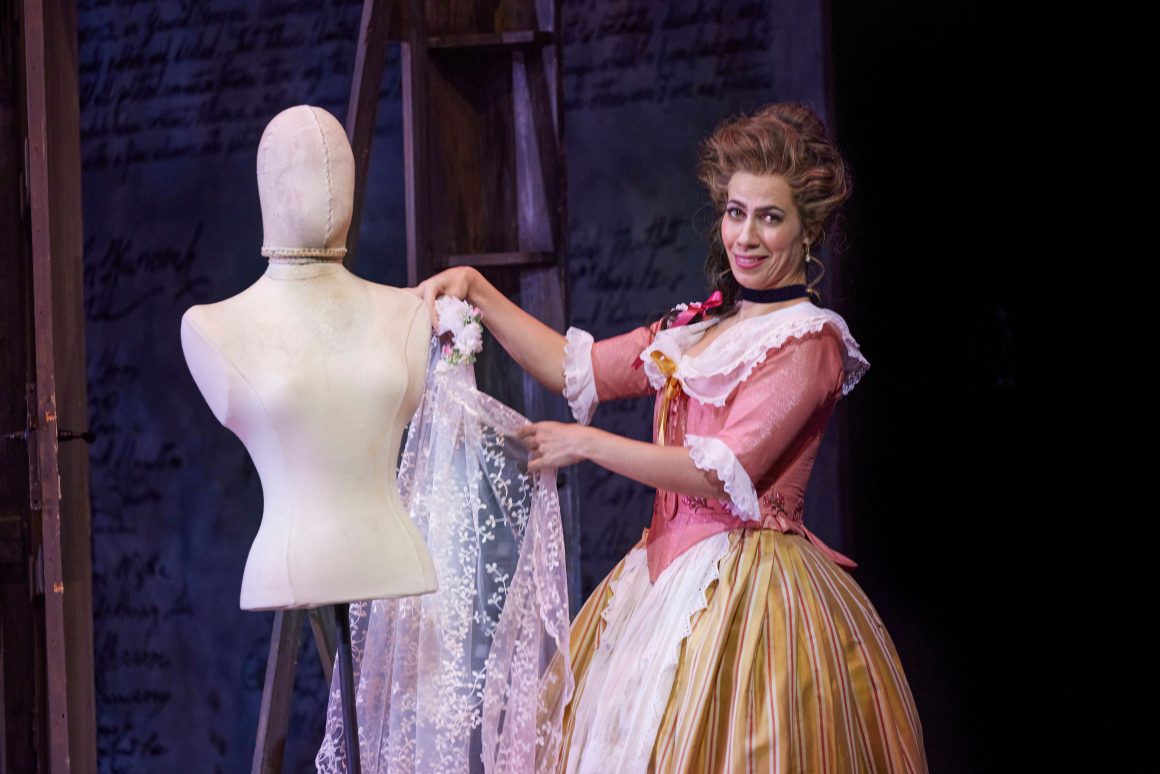
Opera Review: The Marriage of Figaro
By Eula Mengullo, Ansharah Shakil, October 24 2023—
Calgary Opera welcomed its 2023-24 season with performances of Mozart’s timeless classic, The Marriage of Figaro, on Oct. 14,18 and 20. The light-hearted comedy follows soon-to-be wedded protagonists, servants Susanna (Lucia Cesaroni) and Figaro (Marcell Bakonyi), and the schemes they have had to navigate to realize their big day. In Act I, we are introduced to the animated characters of Count and Countess Rosina Almaviva (Philip Addis and Talise Trevigne), the Count’s charming pageboy Cherubino (Carolyn Sproule), Marcellina (Justine Ledoux), Basilio (Arieh Max Sacke) and Bartolo (Matthew Trevino).
Very early on it is revealed that the main hindrance to the couple’s happy ending is the Count, who is making untoward gestures to Susanna and whom they fear would invoke the old-age custom of droit de seigneur. In addition, the engagement is also being threatened by Marcellina, an older woman whom Figaro would be forced to marry if he cannot repay his debts to her. Filled with deceit, mischief, manipulation and amusement, the show takes the audience through the fast-paced convoluted plot toward an anticipated wedding day for the protagonists.
While the show itself is comprised of lighthearted jokes, scandalous revelations and situational ironies that often sent the crowd into laughter, some of the themes explored are common traits of men that still ring true today. Particularly in Act II, the Countess performs an aria where she woefully longs for the affection of her husband. In confidence, the Countess expressed to Susannah about “modern unfaithful fickle husbands” who expect their wives to remain committed while they freely pursue other women. The irony of this is more pronounced considering how the Count — jealous over Cherubino’s crush on the Countess — had sent Cherubino off to the military. In their desperation to get the Count to behave, Susannah, Figaro and the Countess conspire a plan to teach him a lesson in love.
Act III and IV of the opera ramp up the spectacular chaos of the first two acts even more with comedic revelations and misunderstandings along with stunning operatic solos. Figaro’s plotline with Marcellina reaches new levels of hilarity in Act III. Despite the many years that have passed since the sextet “Riconosci in questo amplesso” (“Recognize in this embrace”) was first performed, its performance still remains as strangely touching and as outrageously funny as it must have been back then.
The standout singer of the show is the Countess, with a powerhouse voice and a vulnerable, stirring demeanour, but Susanna shines as a spitfire female lead who has no qualms about using her wiles to trick the Count. She and the Countess decide on a new method of getting back at the Count that has all the devious, unhinged planning of scorned teen girls in movies like John Tucker Must Die.
Figaro and Susanna’s chemistry, meanwhile, is at its best in Act IV with the crowd-pleasing duet “Pace, pace, mio dolce tesoro” (“Peace, peace, my sweet treasure”) that leads to the Count’s final confrontation with them. It’s hard to see the Countess settling for an inferior man, though gratifyingly she does at last receive pleas for forgiveness from her husband in Act IV. She definitely deserves better, but at least she, Figaro and Susanna finally got the Count to behave.
The Marriage of Figaro is an excellent display of the Calgary opera at its best, and a promising start to the new season. The show’s costume design is stunning — and often hilarious, such as the Count’s aggressively low-necked shirt when he attempts to seduce Susanna — and every one of the main cast works together with the Calgary Opera Chorus and Philharmonic Orchestra to sing the rich, intricately woven musical numbers beautifully.
This classic tale was first performed in 1786 and it’s fascinating how elements of its plot carry on to today’s society, albeit with few contemporary adjustments. Although the custom of droit de seigneur is certainly a thing of the past, the concept of men expecting women to remain faithful while acting unfaithfully is most certainly not. Moreover, as demonstrated by the Countess’ efforts to straighten her husband, it is reminiscent of the emotional labour, patience and the great lengths that women often go to for their partners to finally act right. This concept is buried underneath the performance’s comedic tones, which manage to impressively weave love, forgiveness, loyalty and redemption throughout the show.
To buy tickets for the upcoming shows in the rest of the Calgary Opera’s season, visit the Calgary Opera website.
